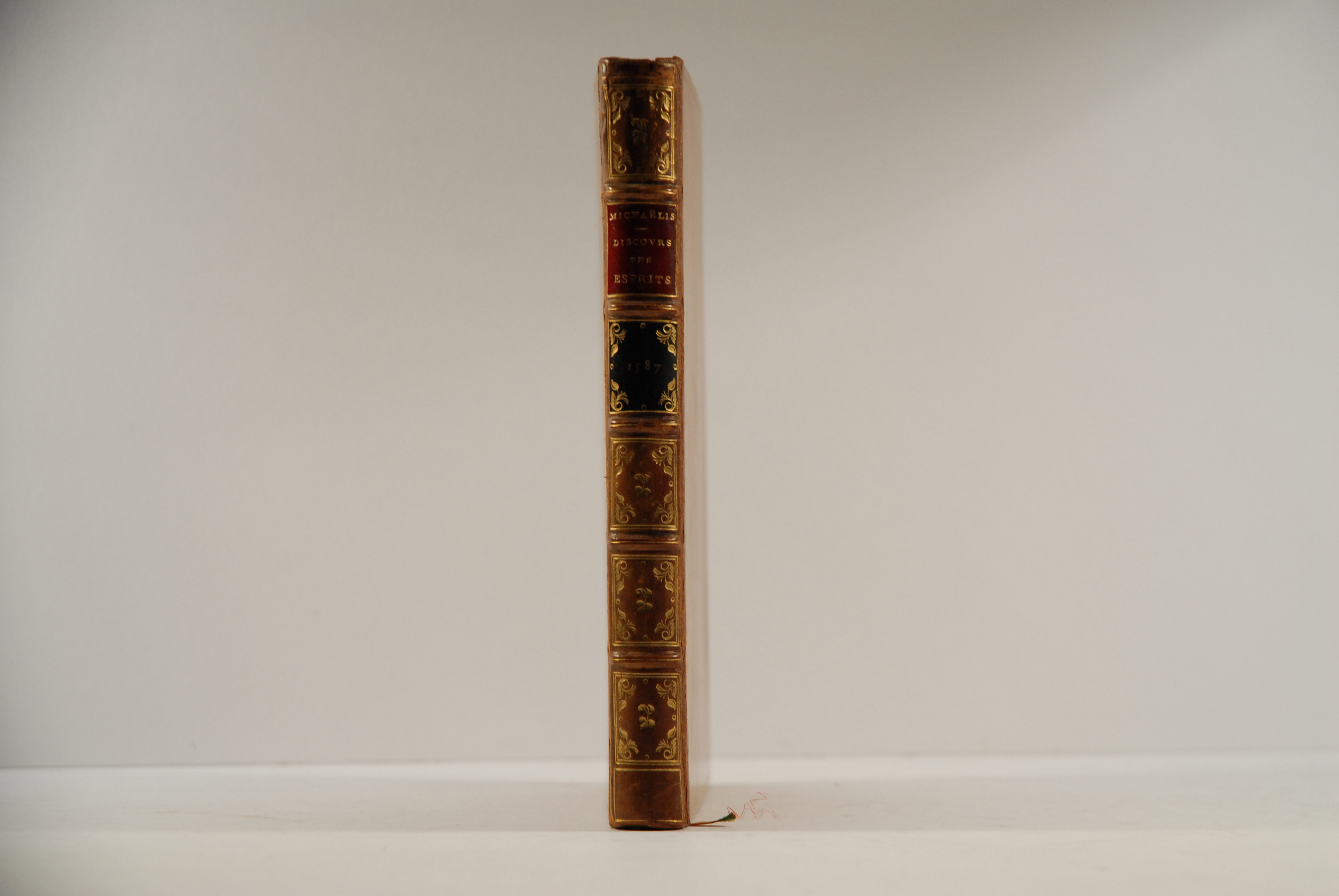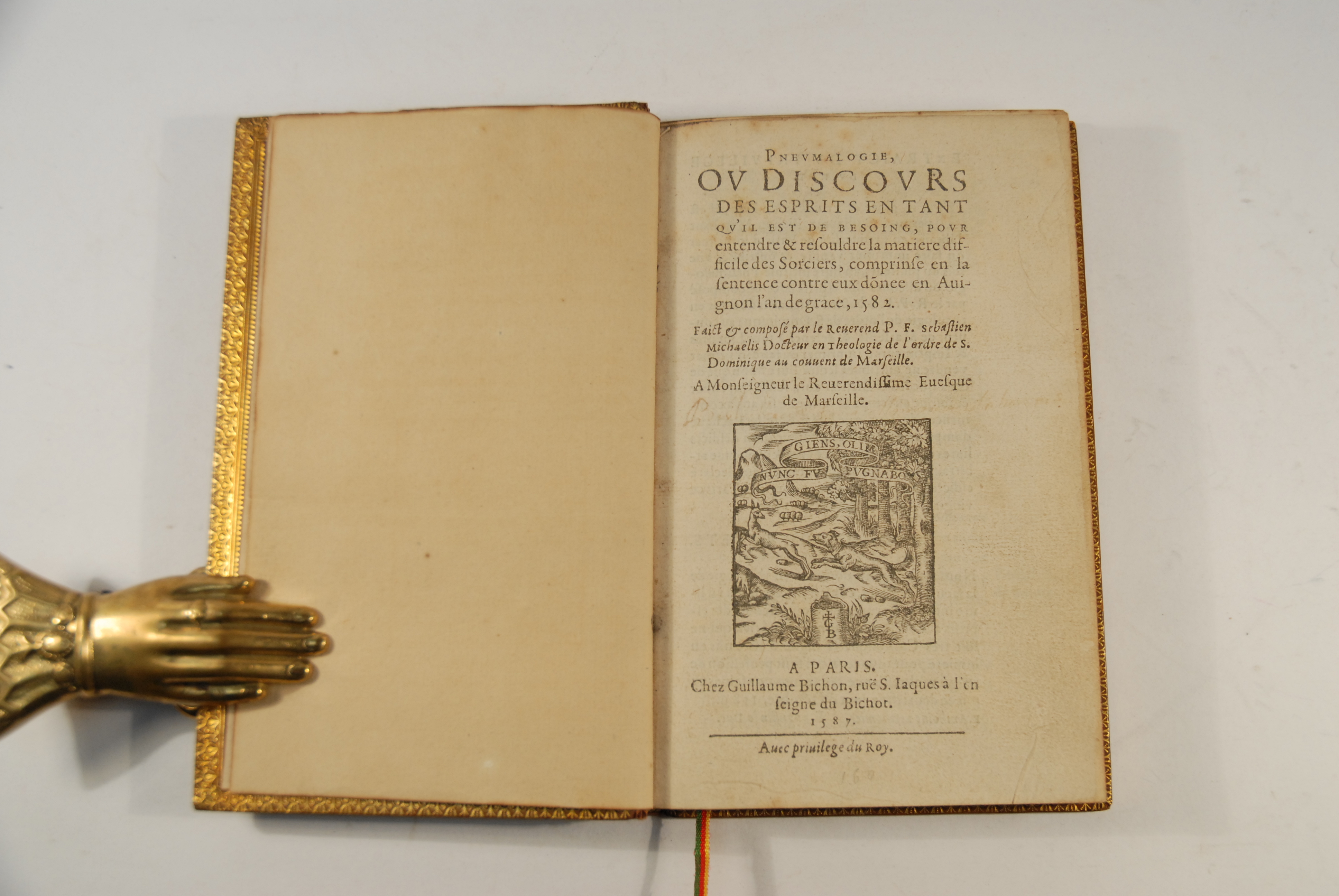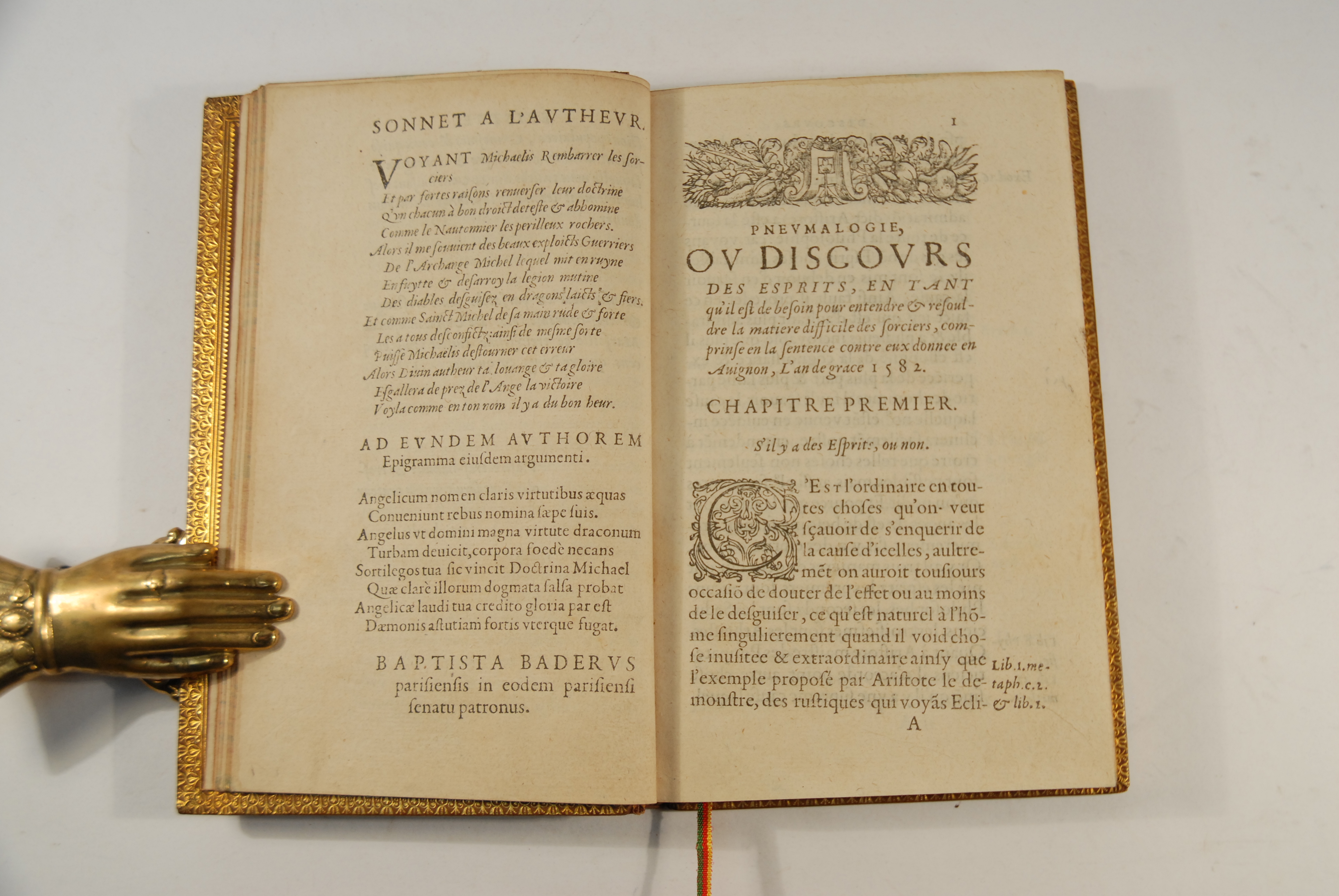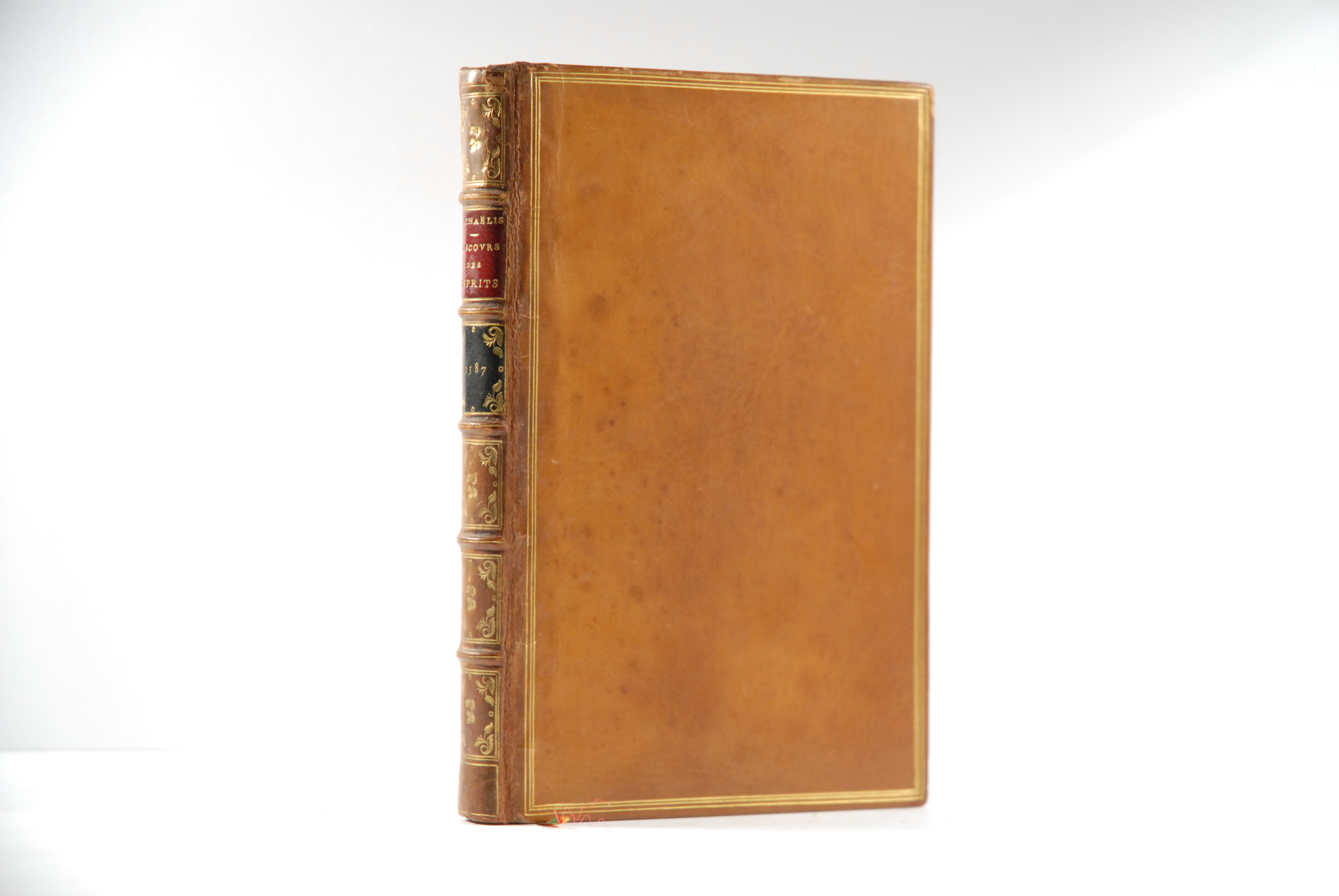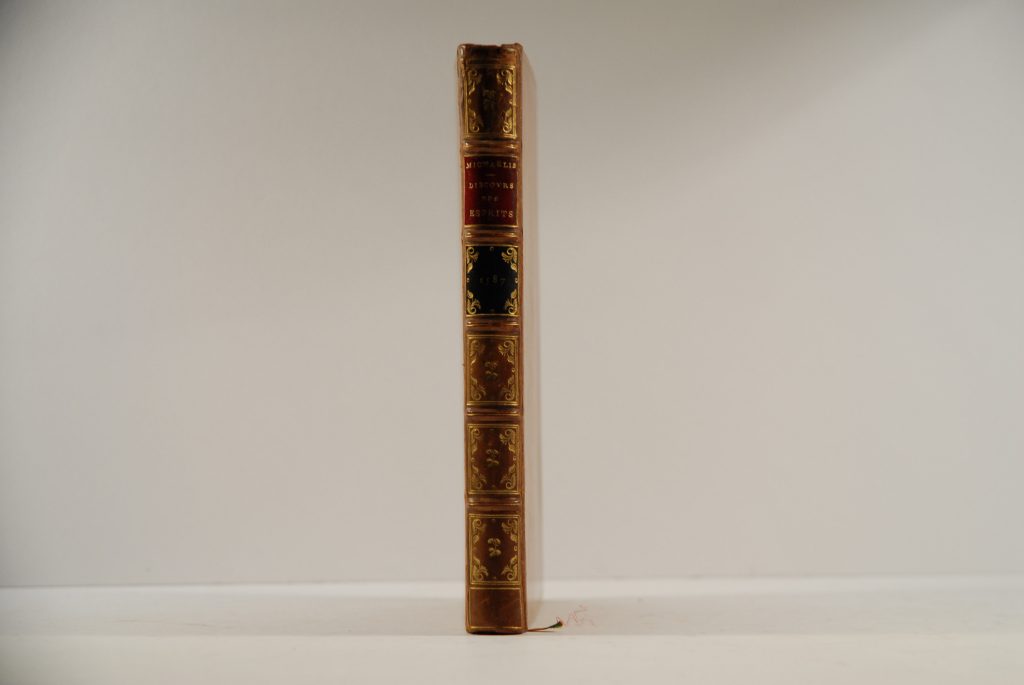MICHAËLIS, Sébastien
Pneumalogie ou discours des esprits en tant qu'il est de besoing pour entendre et resouldre la matiere difficile des sorciers
Paris, chez Guillaume Bichon, 1587£3,750.00
FIRST EDITION. 8vo. fff. [viii] 122 (i.e. 124) [iv] : [ã8, A-Q8.] (without Q8 blank). Roman letter, some Italic. Woodcut printer’s device on title page (a hunting scene), floriated woodcut initials, woodcut and typographical headpieces. Light age toning, tear restored in lower blank margin of fol. 24, very rare marginal spot or mark. A very good copy, crisp and clean, in C19th calf by “Petit Successor de Simier” (signed on fly), covers bordered with a triple gilt rule, spine with raised bands gilt ruled in compartments richly gilt, red morocco title label and black morocco date label, edges gilt ruled, inner dentelles richly gilt, all edges gilt over marbled edges, joints a little rubbed.
Extremely rare first edition of the major work on sorcery by the redoubtable Dominican witch-hunter and inquisitor Sebastien Michaelis. Michaelis was vice-inquisitor in Avignon during the 1580s and was involved in a number of witch trials. In 1587 he published this work on demons. By 1610 he was prior of the Dominican community at Saint-Maxim near Aix-en-Provence where he was later involved in one of the most notorious witch trials, and case of demonic possession, in the History of France, that of the priest Louis Gaufridi, who was convicted of sorcery, tortured and burnt, on the evidence of a nun ‘possessed by the devil.’ The many publications and the notoriety surrounding the Gaufridi case lead to the translation of this work, the Pneumalogie, into English in 1613, where it was of great influence. The first part of the book is divided into eight chapters discussing various aspects of witchcraft, sorcery, spirits, and possession, such as a chapter discussing if spirits have bodies, another on how evil spirits can possess people. The work then presents the case of a witch trail (in Latin) in which Michaelis was involved. He then provides eleven ‘Scholies’ or sentences given against witches, which also includes much discussion on the nature of the devil. “The account of the Avignon witches featured the whole panoply of Continental diabolism, including devil-worship, the Sabbath, cannibalism of infants, copulation with incubi and succubi and the osculum obscenium in which witches pledged their allegiance to the devil by kissing a black goat on the anus. This Catholic work was sufficiently sensational to find a ready market in England..”. Francis Young ‘English Catholics and the Supernatural, 1553–1829.’
Executions for witchcraft in France became rarer after 1610 as the Parlements of Paris and several provinces were de facto decriminalising witchcraft. However Michaelis was Grand Inquisitor in the papal territory of Avignon and so fell out of French jurisdiction. “Michaelis was something of an expert on witchcraft, since he had served as vice-inquisitor during a major out-break of witchhunting in the region of Avignon. In this series of trials in 1581 and 1582, at least fourteen witches were convicted and burnt. Jonathan L. Pearl. ‘The Crime of Crimes: Demonology and Politics in France, 1560-1620’. Michaelis’ work on witches is particularly interesting for its focus on women and sexuality; this and the fact that the work was written in the ‘vulgar’ vernacular caused some disquiet among the clergy in France. In this work he gives an example of a sentence passed at Avignon in 1582 as comprising, in a little space, the most execrable and abominable of the crimes of witches and Sorcerers, which includes their use of broomsticks, the murder and dismemberment of new born babies, copulating with devils, “then adding sin to sin you the men did copulate with Succubi and you the women did fornicate with Incubi.” ..“Sebastien Michaelis, the leading French Dominican, wrote in his ‘Pneumalogie, ou discours des esprits’ of ‘la simplicite naturelle qui est en ce sexe’ and of the Devil’s awareness ‘que c’est un organe propre a attirer l’homme a sa volonté.’ But he also said that women were addicted to extremes of behaviour, good as well as bad, and then devoted the rest of his discussion to the examples of the latter not the former.” Brian P. Levack. ‘Gender and Witchcraft’.
Very rare first edition of this most influential work on witches.
In stock


